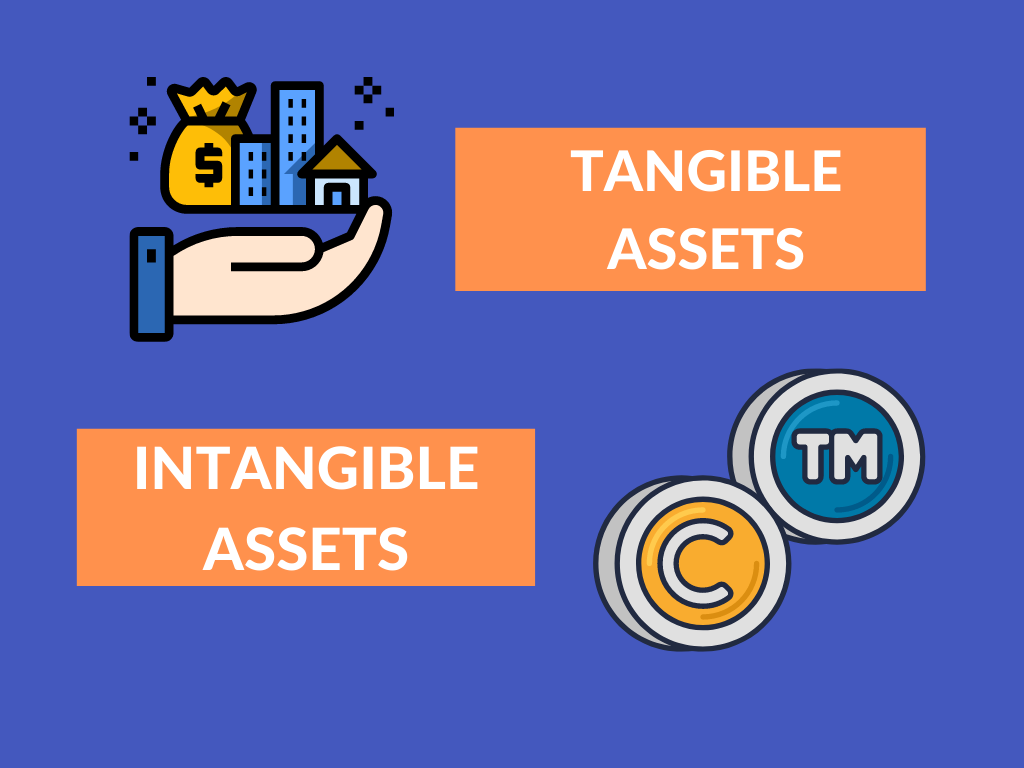In simple terms, An Asset is a thing that is useful or valuable to the Business. Each asset has its own classification based on its physical form as well as its expected lifespan and natural characteristics. The distinction between tangible assets and intangible assets is purely based on the physical form of a business.
Tangible assets:
Tangible assets are Long-term physical forms of resources owned by a business. These assets can be seen, touched, and felt. This type of asset is acquired by a business to facilitate business operations, and not for the purpose of reselling it.
Tangible assets include current assets and fixed assets. These assets suffer the risk of loss due to fire, theft, accident, or any other disaster.
Examples:
Fixtures & fittings, Plant and machinery, Furniture, land, and buildings, etc;
Current assets: Raw material, Inventory, Bills receivables, etc;
Intangible assets:
Intangible assets are Long Term nonmaterial resources owned by the business. In which it has an economic value that adds value to the business.
It has a Residual value and is calculated on the amortization method.
Examples:
Patent, copyrights, trademark, goodwill, etc;
Difference between Tangible assets and Intangible assets:
| Tangible Assets | Intangible Assets |
|---|---|
| Meaning | |
| Tangible assets are the assets that are in a physical form for a long period used in the production of goods and services. | Intangible assets are assets that are nonphysical assets that add value to the business. |
| Examples | |
| Fixed assets: Furniture, Plant and machinery. Current assets: Raw material, Inventory. | Patents, copyright |
| Existence | |
| There is the physical existence of the tangible assets which we can touch, feel, and see | Whereas in intangible assets we cannot see and touch. |
| Types | |
| Fixed and current assets | Mostly these are fixed assets |
| Liquidation | |
| It is easy to sell and conversion of cash | It is difficult(for selling) for liquidation. |
| Collateral acceptance | |
| Yes. These assets are accepted as security for providing loans. | No |
| Reduction in value | |
| Depreciation | Amortization |
| Risk of loss | |
| Tangible assets may be lost due to theft, accident or fire, etc; | Intangible assets cannot be lost as they don’t have any physical form. |
Bottomline:
As a result of the preceding discussion, It is clear that the difference between tangible assets and intangible assets is the piece of property owned by an individual or organization that is valued and available to meet obligations.
Further related reading:



